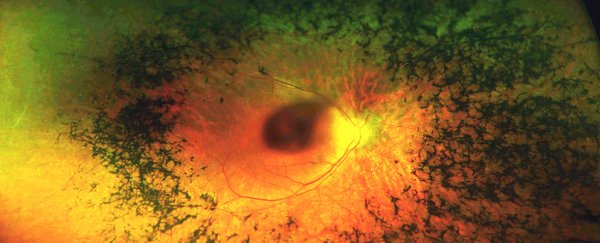Doctors in Australia have discovered an ultra-rare condition that is gradually blinding a handful of families around the world – and now they're racing to try and find a way of treating it.
Signs of the condition were first spotted in Australia, when mother Beth While visited doctors after experiencing vision loss problems in 2004. Four years ago, Beth's children started developing similar symptoms.
Now a new study links the vision loss the Whites are experiencing with similar tales from four other families worldwide, and also identifies a genetic cause.
"I had seen the family and we knew that Beth had retinal dystrophy, but she also had these other unusual symptoms, including fever and headaches and issues in the optic nerve," says lead researcher and clinical geneticist Robyn Jamieson from the Children's Medical Research Institute in Australia.
"We suspected there was a novel gene involved because of the unusual features."
The condition is being called ROSAH Syndrome, named after the damage it does to the eyes and other organs. The disease causes retinopathy (damage to the retina), optic nerve edema (swelling), splenomegaly (swelling of the spleen), anhidrosis (an inability to sweat normally), and migraine headaches.
Jamieson and her team used genome and exome sequencing to chart the DNA coding of the White family and also the other families experiencing similar problems – whether or not vision loss had already started.
After running tests on all five families, as well as tests on mice and human tissue in the lab, the team discovered the same variant in the ALPK1 gene.
"It did sound like they had the same condition, and we ended up finding the same variant in the same gene," says Jamieson.
"My lab also did the work looking at the expression of the gene, and our latest results suggest that it is involved in signalling pathways of cells, with a likely role in inflammation."
With the spleen and sweating process also affected by the condition, the suggestion is that ALPK1 plays a role in several organs in the body. Variations in the expression of the gene have previously been linked to gout and kidney disease.
Now the next big task is working out how to stop ROSAH. One possibility is that this particular abnormality in the gene somehow interferes with the natural cell cycle progression, the way that cells duplicate and pass on their DNA coding.
Finding a treatment could still be a long way off, but identifying the root cause of the condition is a huge step forward – especially for Beth White, who began losing her vision as a teenager, and how at last knows why.
"Living with a visual impairment, every day is hard work and I don't want that for my kids," she says. "Every parent wants to give their kids every opportunity for a better life, and I can't imagine the impact. Even if we could stabilise their vision, if they could hold on to what they have now, it would be a miracle."
"Hope is everything," she adds, "knowing that there are people out there interested means the world to us."
The research has been published in Genetics in Medicine.
